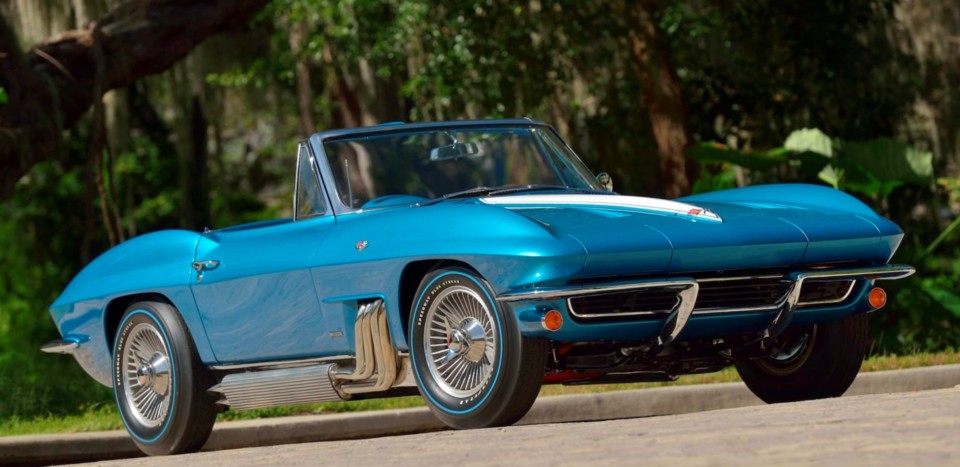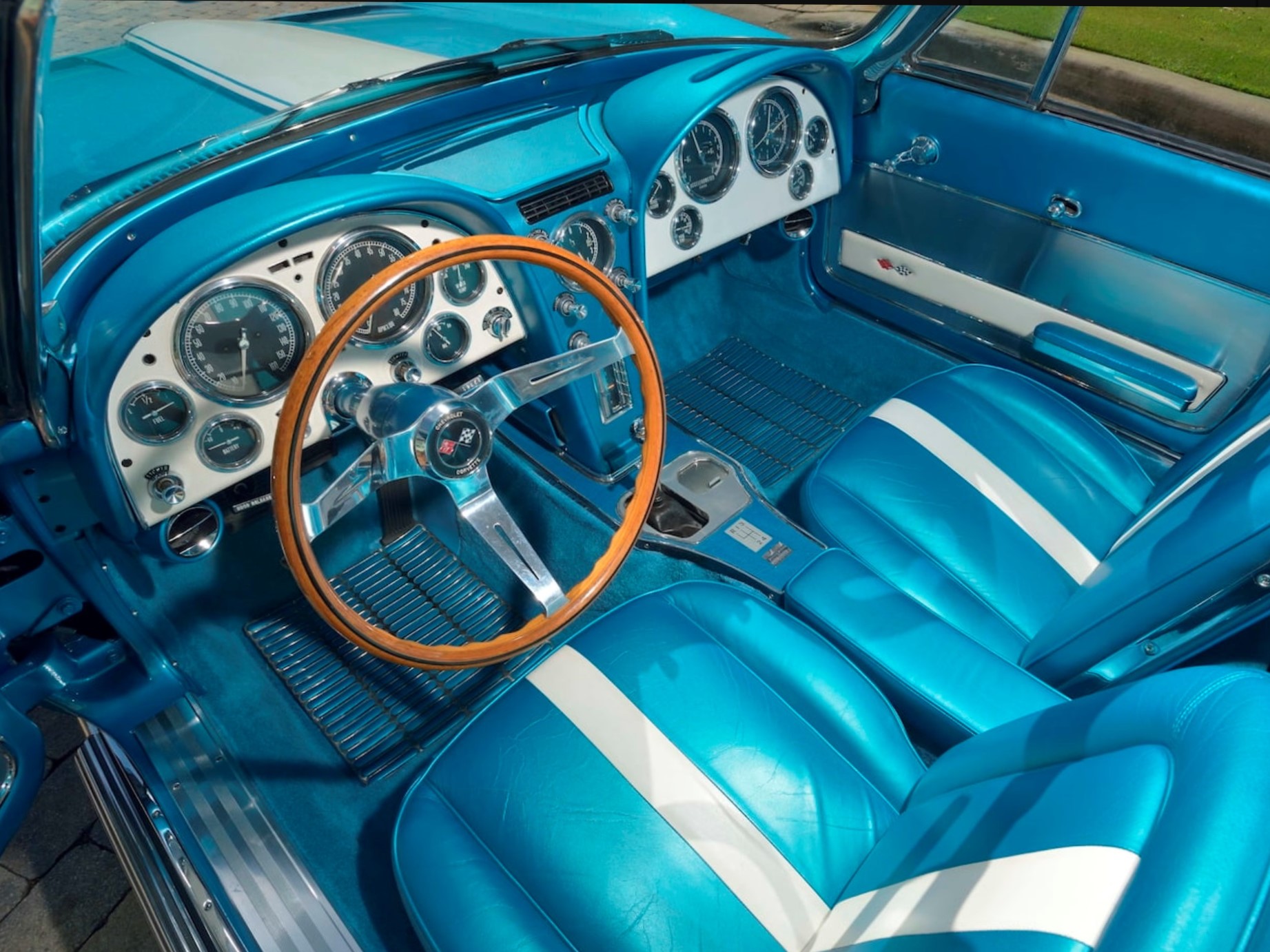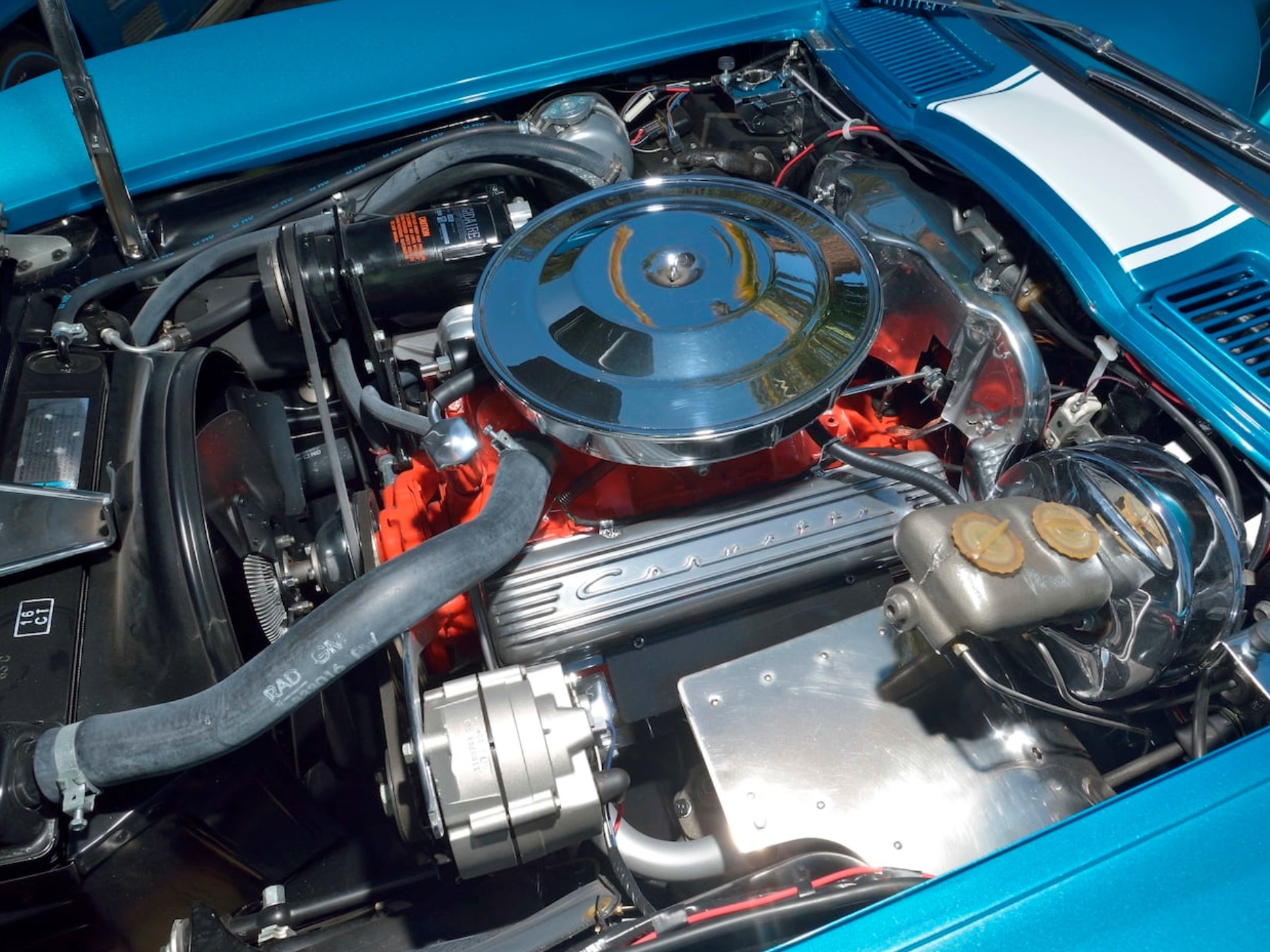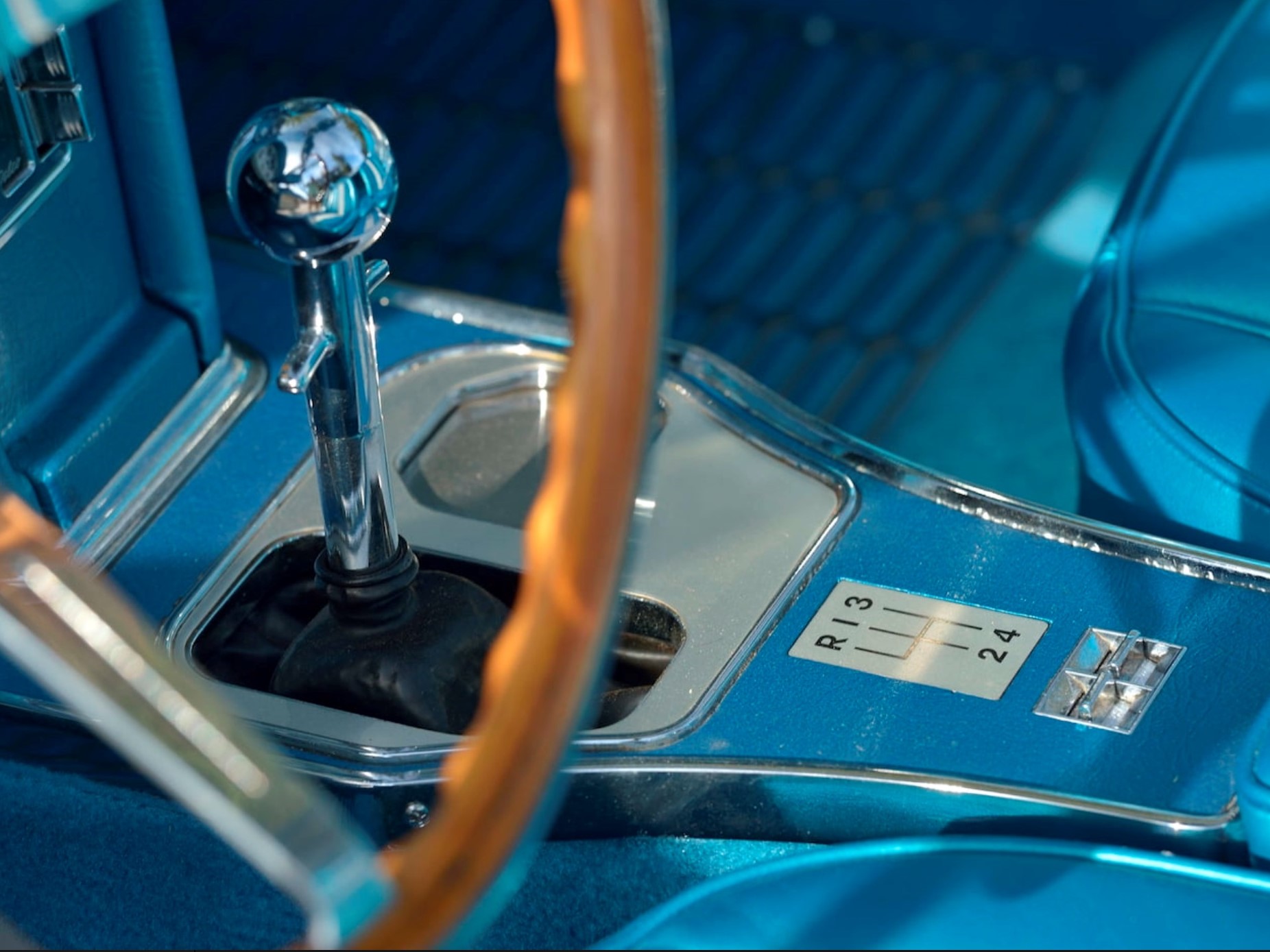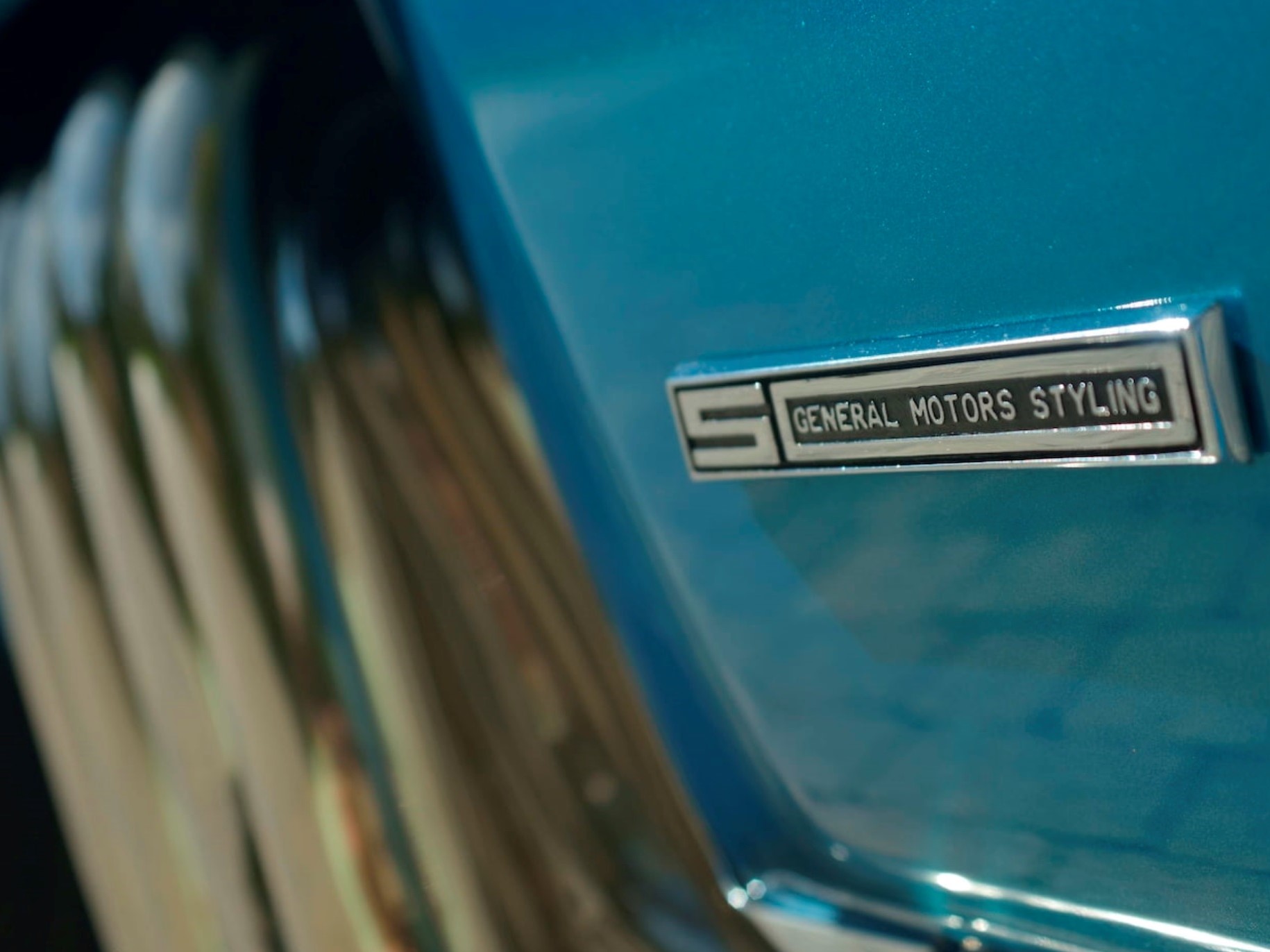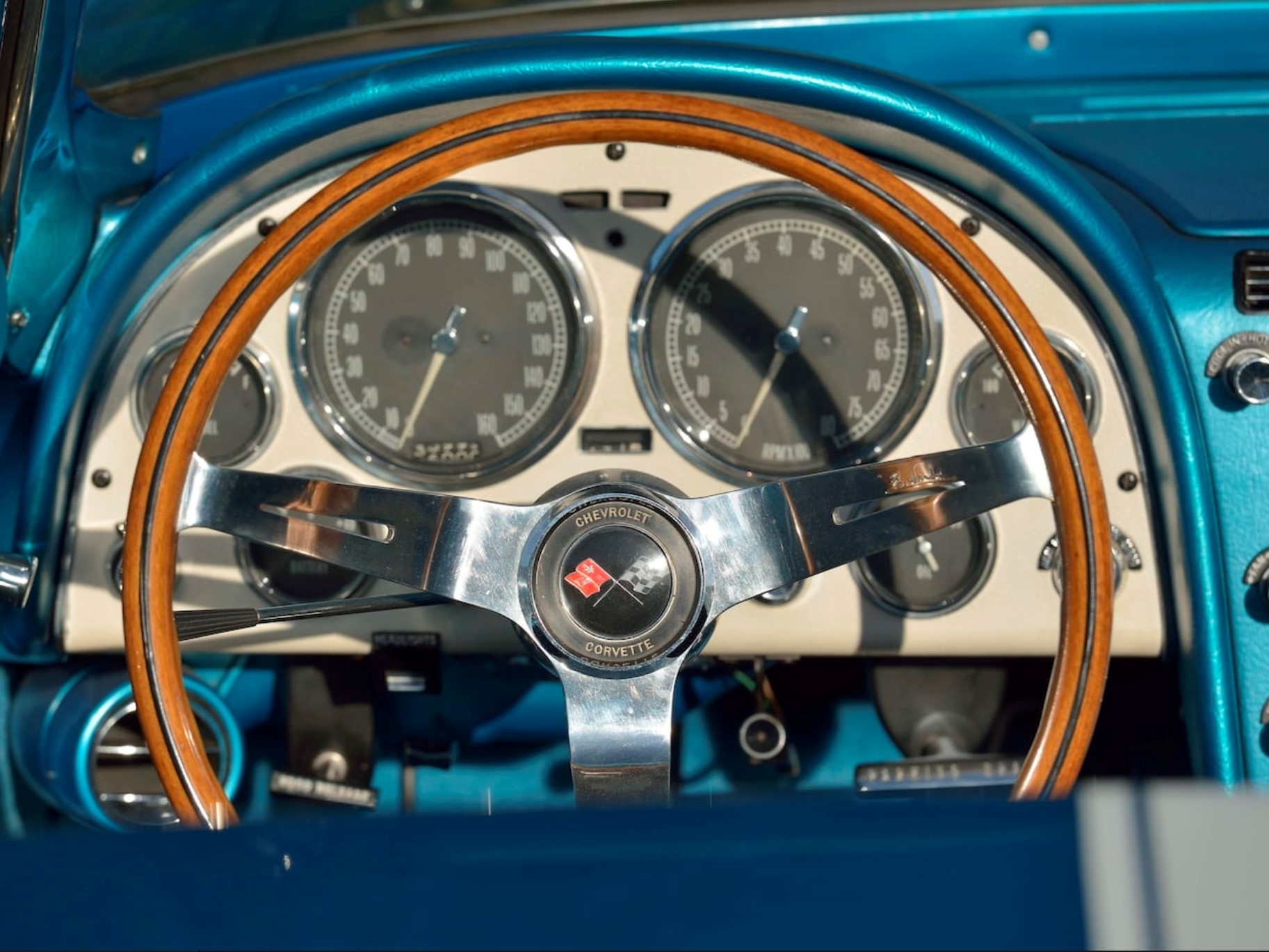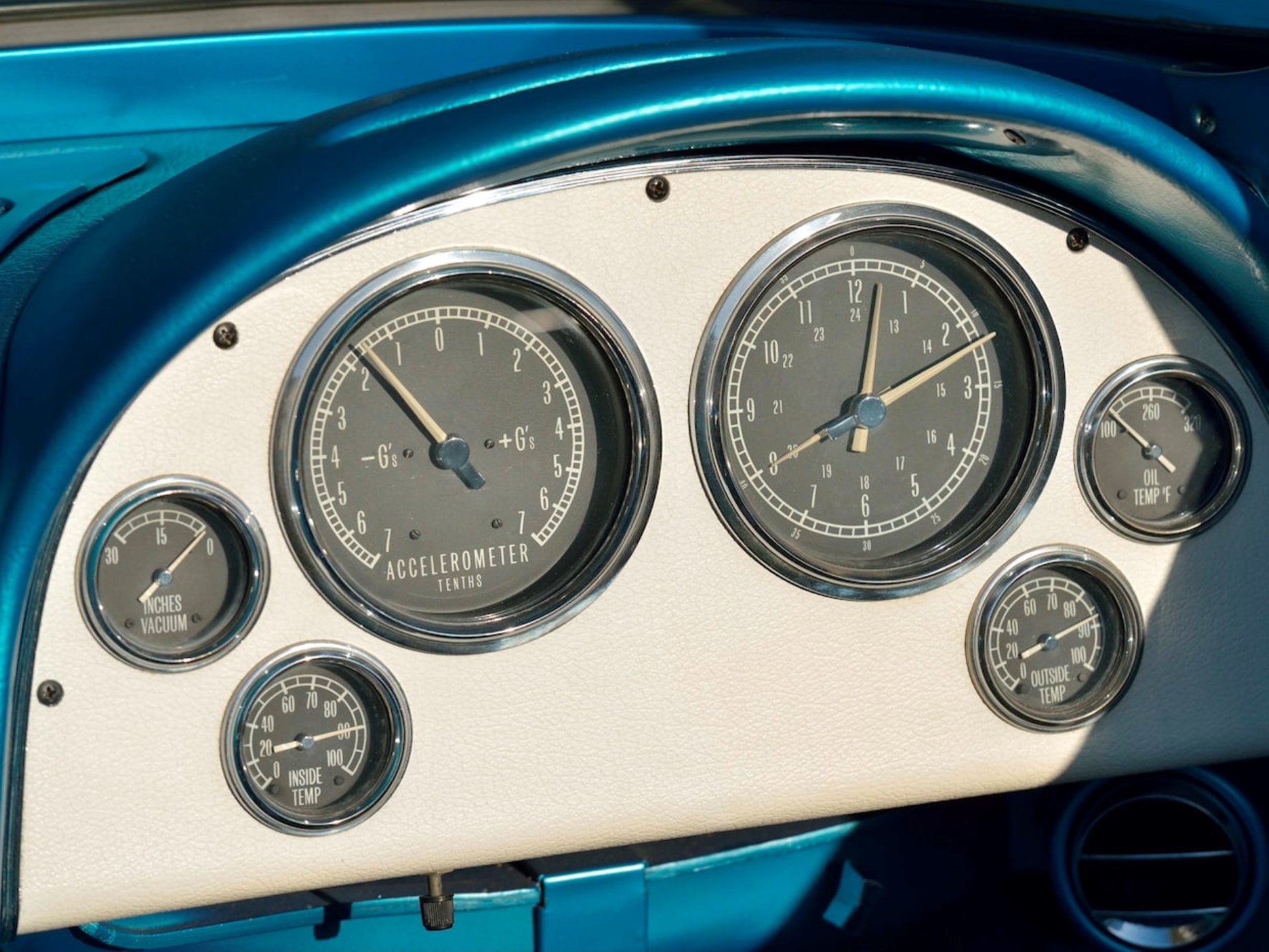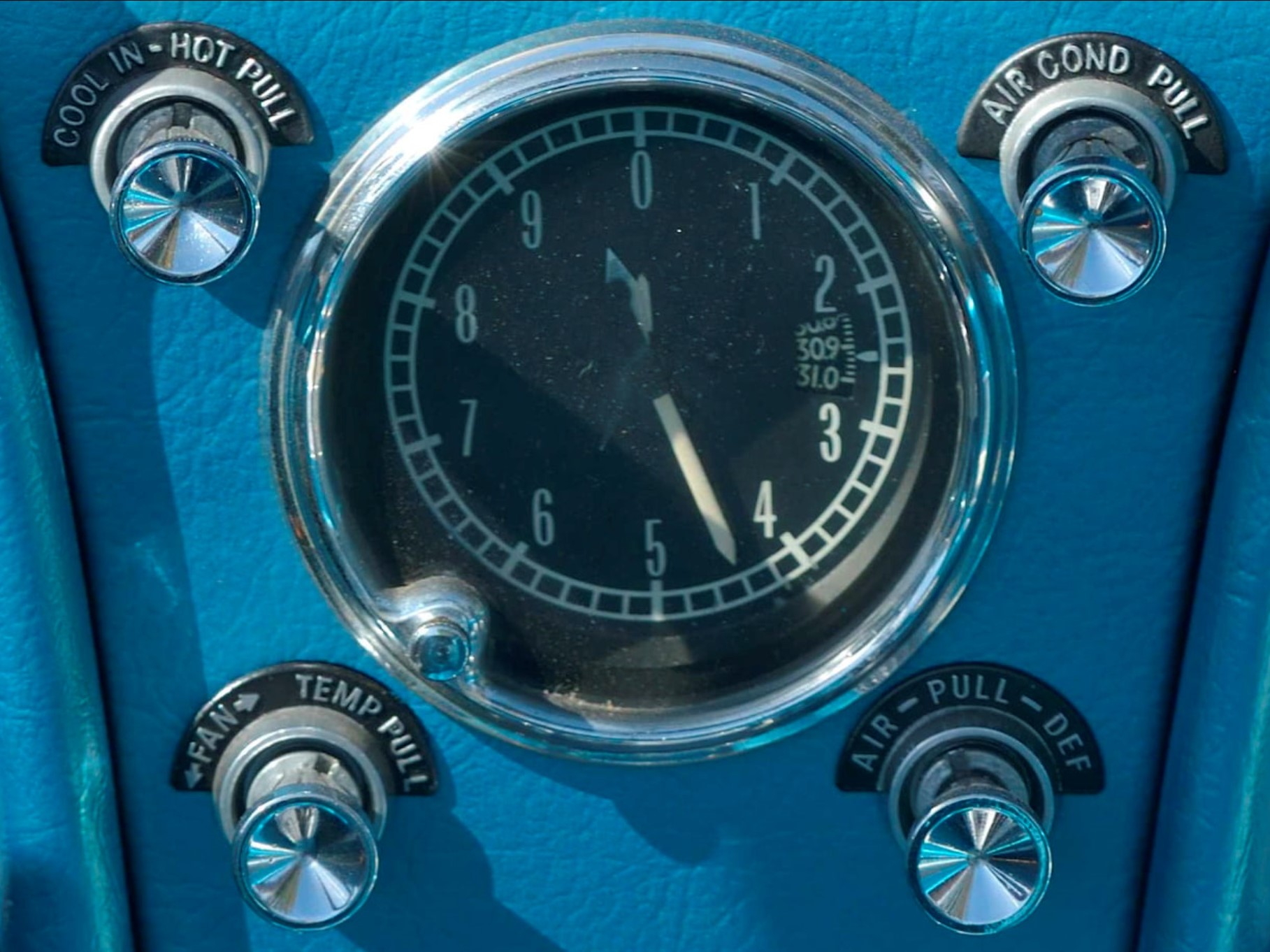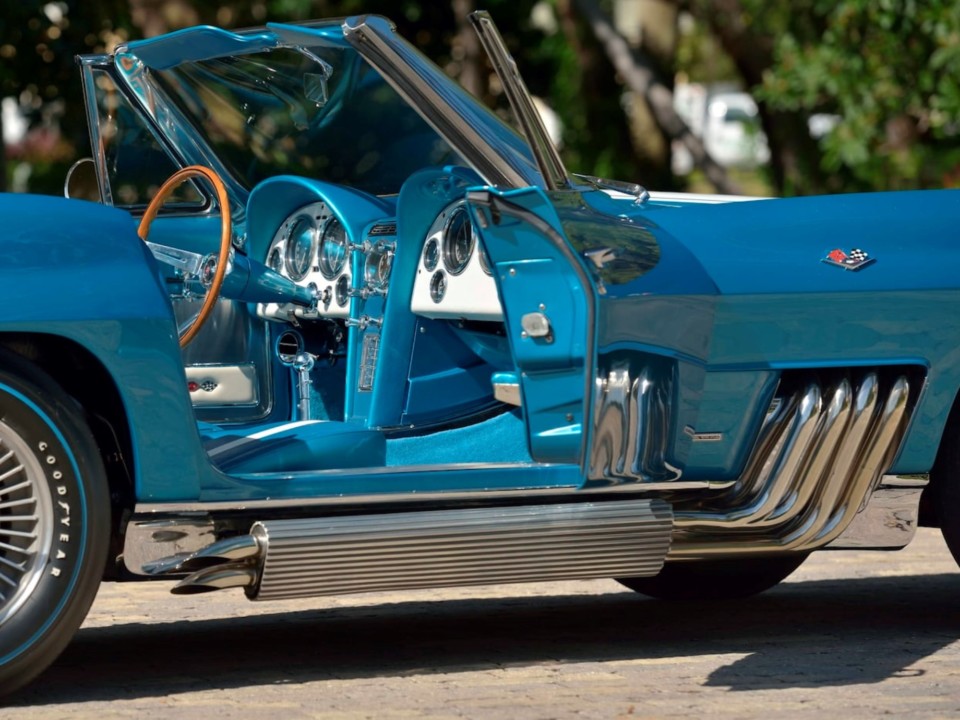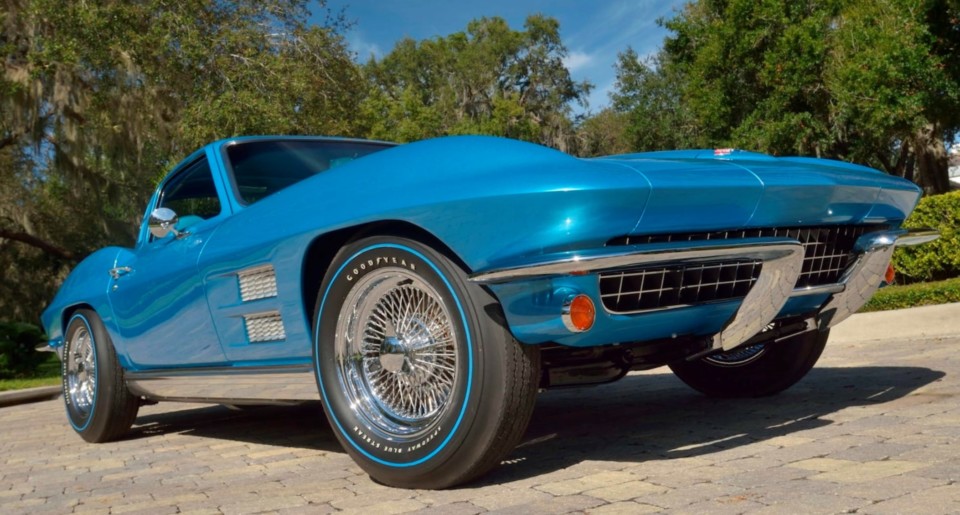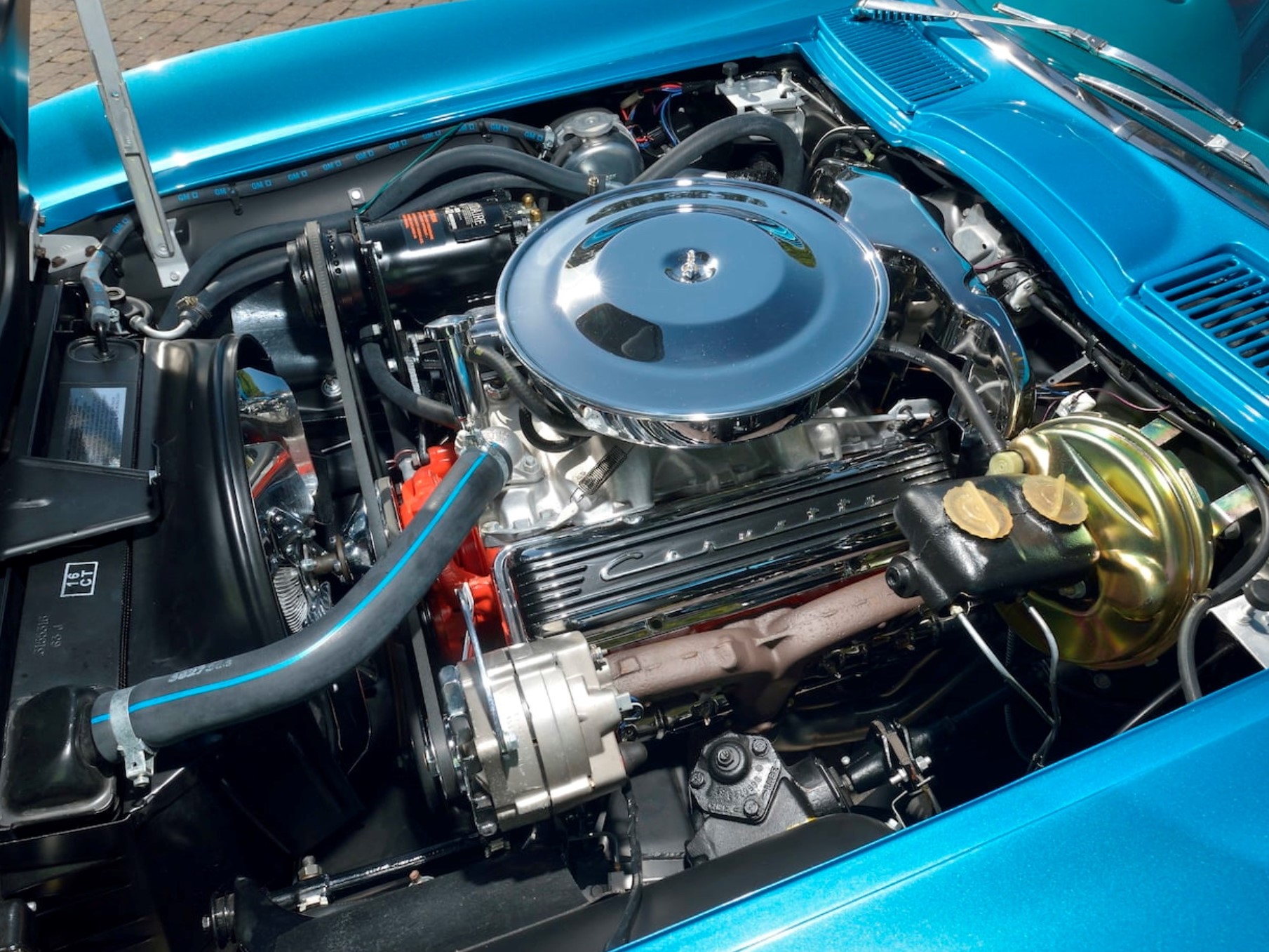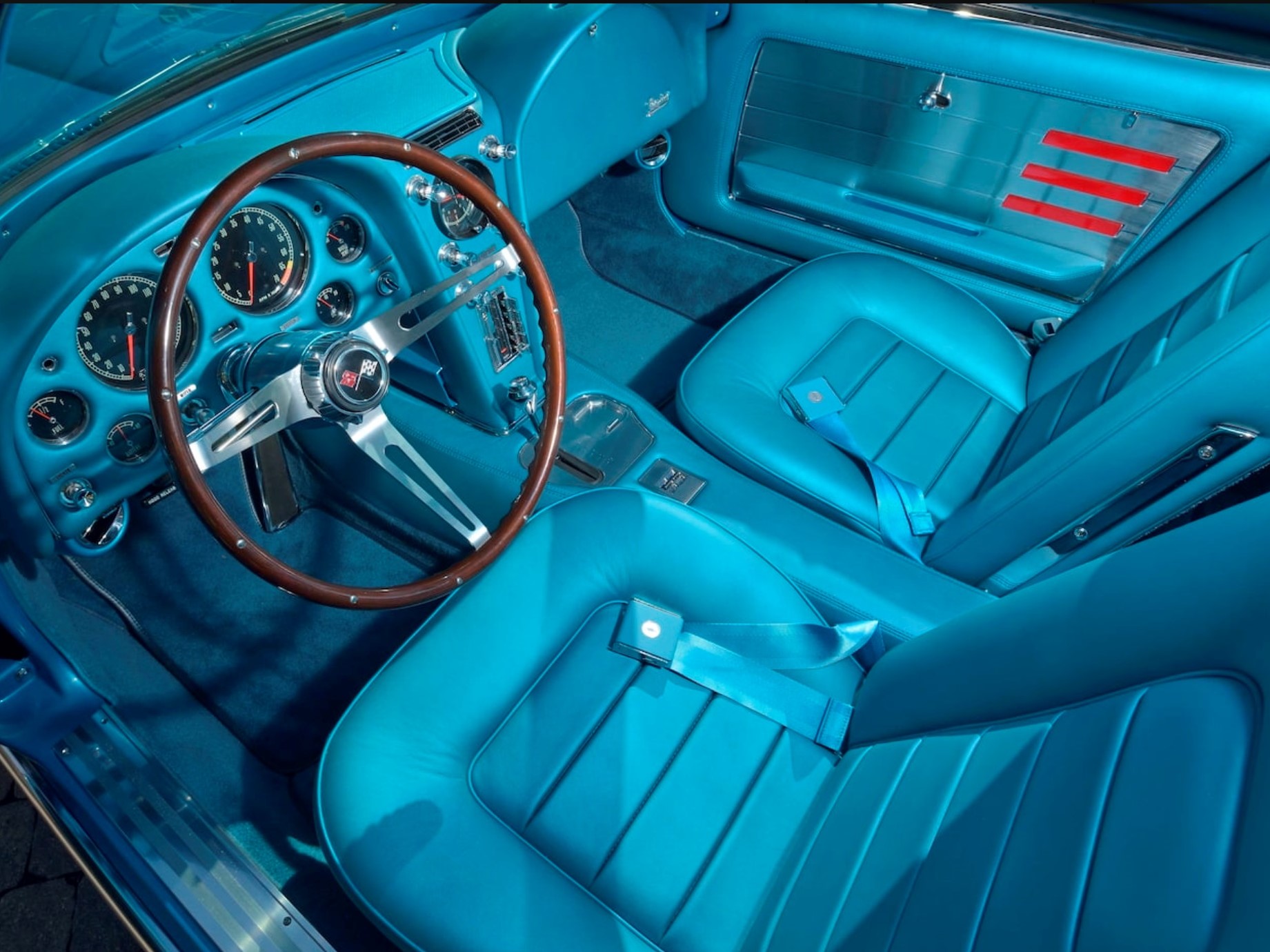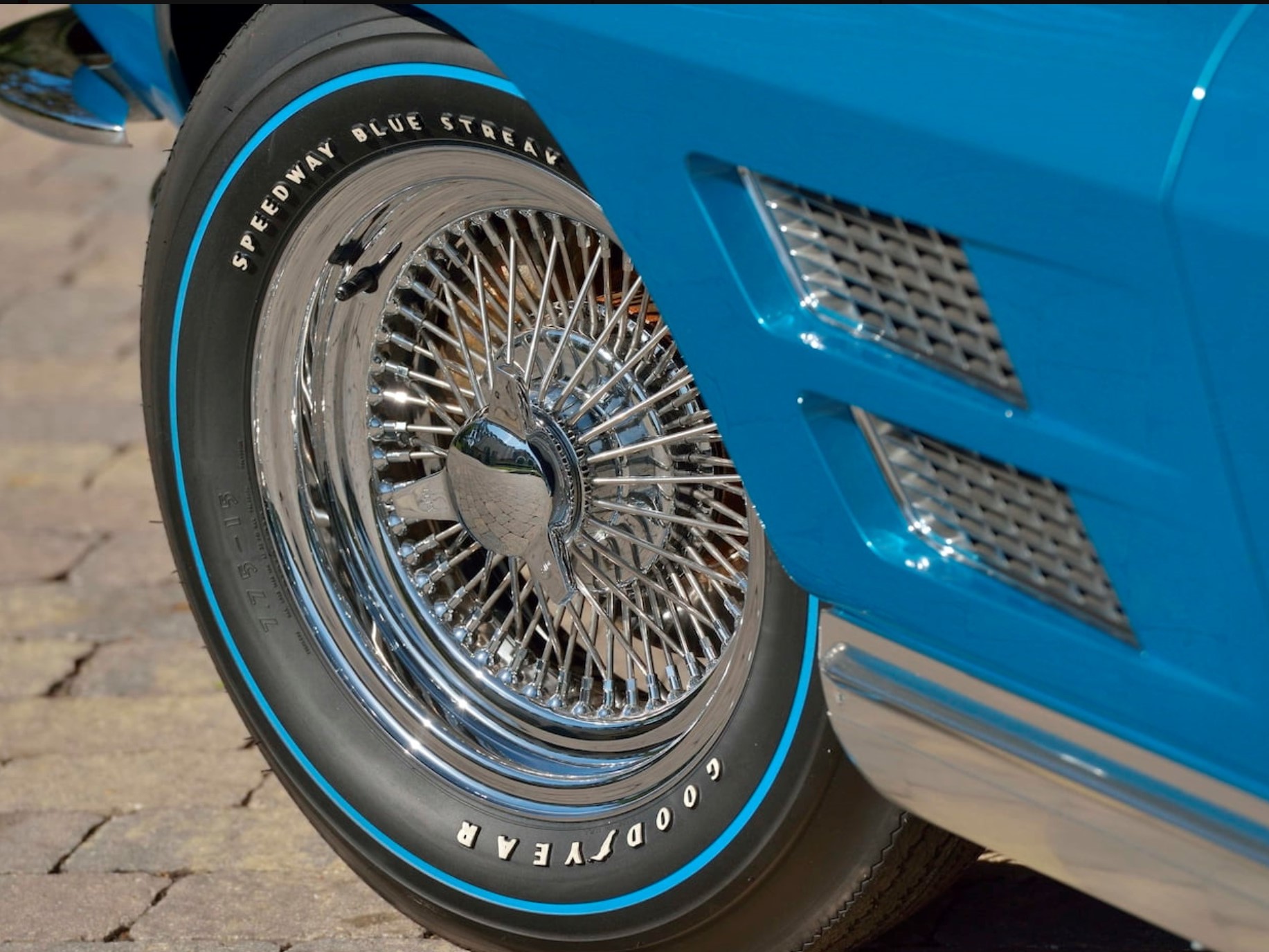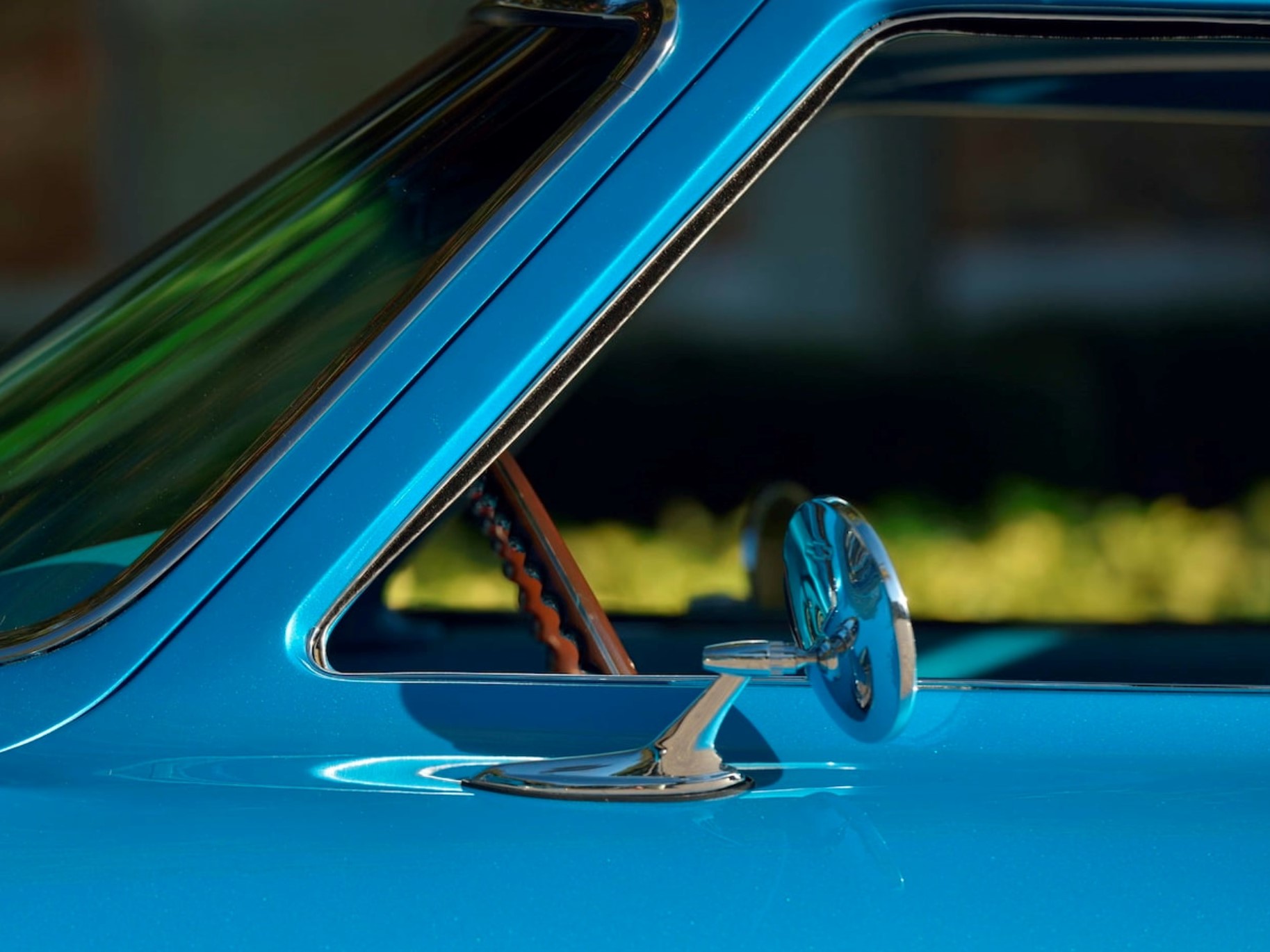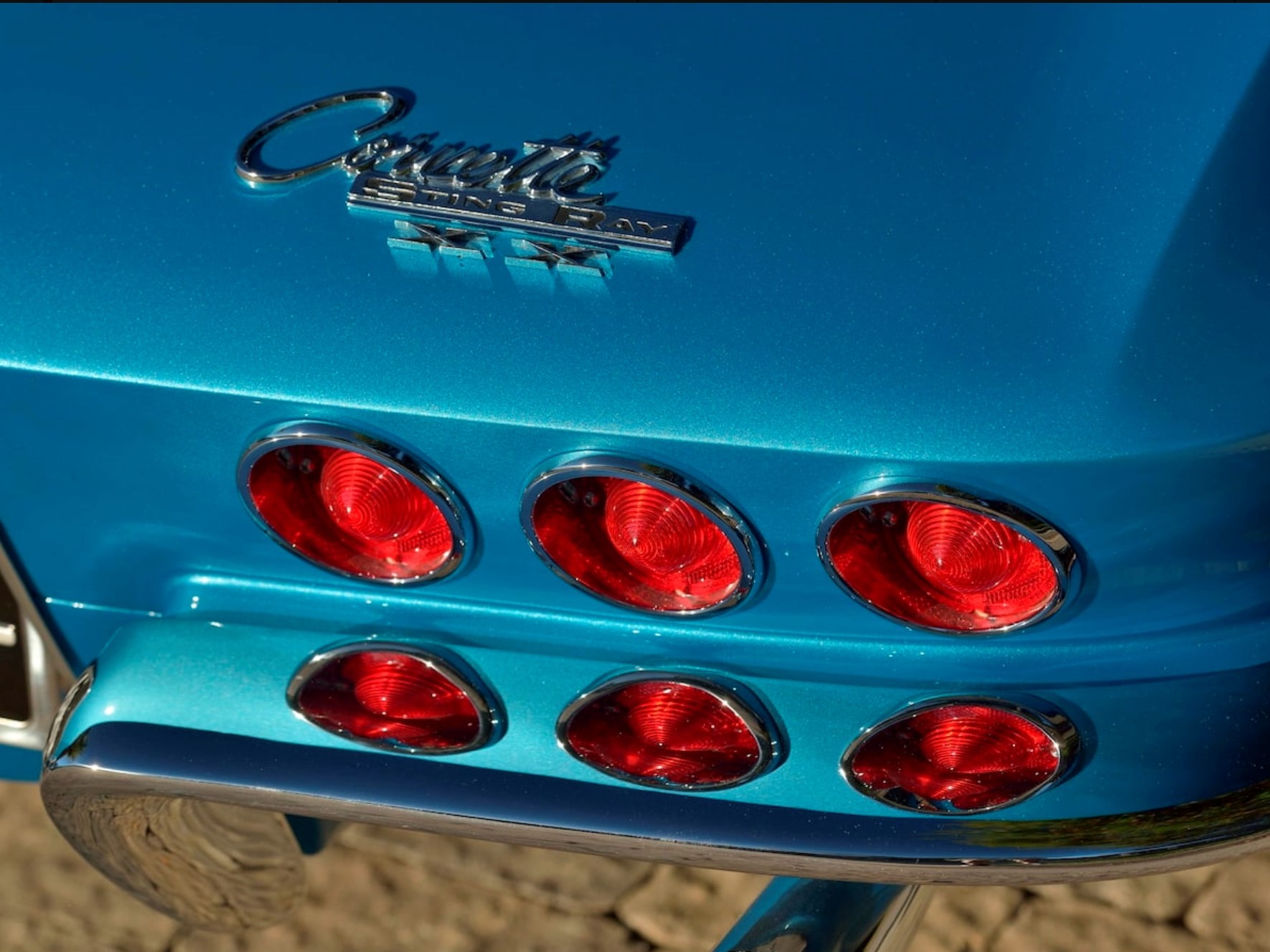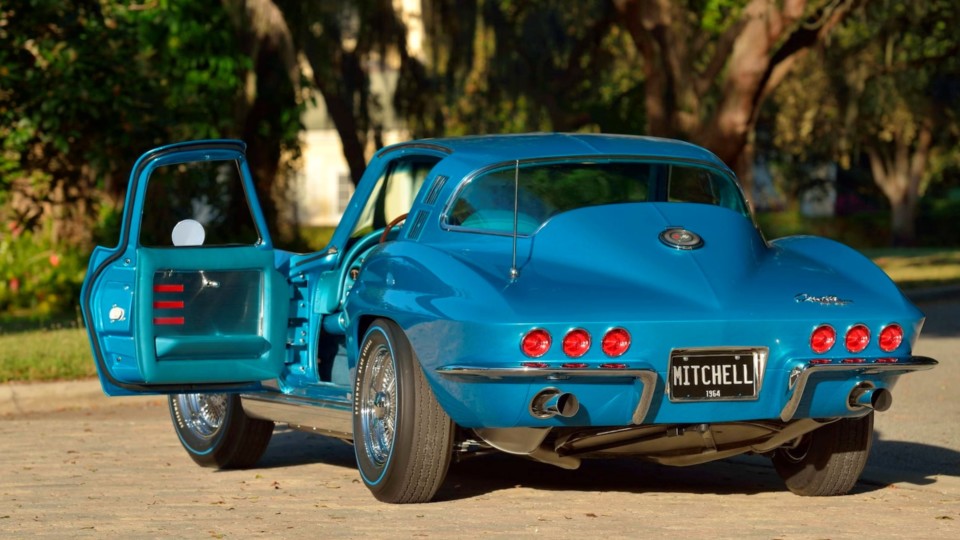These two Chevrolet Corvette Sting Ray Styling Cars, a 1963 convertible and 1964 coupe known respectively as the Harley J. Earl and Bill Mitchell Corvettes, will be offered together as one lot at the 2019 Mecum Kissimmee Auction. These two significant one-off Corvettes in the model’s history were owned and driven by the two most influential and fascinating figures of the automotive design industry.
1963 Harley Earl Corvette
Produced under Shop Order 10323, the Harley Earl Corvette, a 1963 convertible, was gifted to Earl by GM Design, who delivered it to the driveway of his home in Palm Beach, Florida. Earl used the car as a personal driver for two years and drove it as the parade car at the 1965 Daytona 500 when he served as grand marshal. To this day, the trophy presented to the winner of the Daytona 500 is named “The Harley J. Earl Trophy.” Interestingly, while the Earl Corvette bears a 1963 serial number, it incorporates numerous 1965 production components, including the hood and exterior emblems, interior control knobs and 4-wheel disc brakes.
Additional gauges and other styling cues direct from the talented GM Styling department adorn Mr. Ear's personal ride.
It also displays a number of items that never saw production, most notably the distinctive side-exit exhaust pipes exiting through openings behind the front wheel wells and extending rearward within chromed channels in place of the standard lower sill trim strips. Only four Corvettes were ever built with this custom exhaust system: the original 1961 Mako Shark, the Harley Earl car, the Bunkie Knudsen car and the Chicago Auto Show car. Finished in Blue Metallic paint with a white stripe that foretold the 1967 big-block Stinger motif, the Harley Earl Corvette features Goodyear Speedway Blue Streak tires on 1964-style 3-bar finned-aluminum knock-off wheels.
When you're reaching further than any earthly vehicle before, more gauges may get you there. An altimeter is ALWAYS a good choice!
Inside, the instrument and glovebox panels were covered in white vinyl, an altimeter replaced the clock in the center of the dash, and the clock was moved to the glovebox panel and supplemented with an accelerometer, vacuum-pressure gauge, oil temperature gauge and matching inside/outside temperature gauges. In addition to metal foot-well plates, custom leather seats with white accent stripes were installed along with matching door panels featuring brushed-metal accent panels with crossed-flag emblems set into white inserts. Interior wizard Al Knoch emulated the original upholstery using specifications supplied by General Motors archivists.
Following normal procedure for factory test cars headed to private use, the Harley Earl Corvette’s original fuel-injected 327 CI small-block was replaced with a carbureted version, and air conditioning was added to offset the Florida heat.
The 1964 Bill Mitchell Corvette
For many years, one of the gems of the Bob McDorman Collection of special GM Design Corvettes, its distinctive Blue Metallic paint is accented with a custom-manufactured die-cast front grille and matching dual front-fender vents. One detail easily missed by the casual observer is the absence of side vent windows, a feature that hinted at the Astro Ventilation introduced in 1968 Chevrolet models. A popular contemporary customizing trick was adopted at the rear, where a third light was added to both tail-light arrays. Like the Earl Corvette, the Mitchell coupe rides on Goodyear Speedway Blue Streak tires, in this case mounted on chromed 72-spoke knock-off wire wheels with 3-bar spinners.
The Bill Mitchell Corvette features forward-thinking items and a focus on flair.
Just as the exterior modifications reflected Mitchell’s “less-is-more” approach to styling that contrasted with that of his flamboyant mentor, the interior treatment also shows restraint while giving away nothing in sheer style, the most dramatic element being the unique “chaser” lights set into the brushed-metal panels decorating the inner door panels. GM stylists made extensive use of padded leather upholstery dyed to match the body color, even using it to cover the console and the instrument and glovebox panels. Other custom interior touches include color-matching seat belts, an engraved “Fasten Seat Belts” warning plate on the center stack, and a unique shifter—similar to that in the contemporary Buick Riviera—set in a brushed-aluminum engraved shifter plate. The overall effect is one of unity rather than clutter, a consistent theme in Mitchell’s best designs.
Stylized knock-off wheels spin nearby custom-cast vents. Wing window vents were omitted while an additional third tail light was added per side out back.
In contrast to the Earl Corvette, the Mitchell coupe engine compartment approaches show-car detailing. The standard chromed air cleaner and stainless wiring shields are supplemented with an aluminum intake manifold, highly polished finned-aluminum valve covers, chromed pulleys, brackets and alternator cooling fins, and a chromed thermostatic fan with polished blades.
A speed demon and racing enthusiast through and through, Mitchell’s choice of the high-performance small-block V-8 coupled to a 3-speed Turbo Hydra-Matic (which would not appear in a production Corvette until 1968) gave this one-of-a-kind Corvette superb performance.
Both cars are genuine American treasures, monuments to their namesake’s respective styles; yet together they also represent the inseparability of their talents and the immense influence Harley J. Earl and William L. Mitchell asserted together on the automotive, and yes, popular cultures. You will have your chance to see and possibly bid on these two classic cruisers as they are sold as Lot R492 at the upcoming Mecum auction in Kissimmee, Florida (Jan 3-13). A true chance to own two, one-of-one Corvettes!




